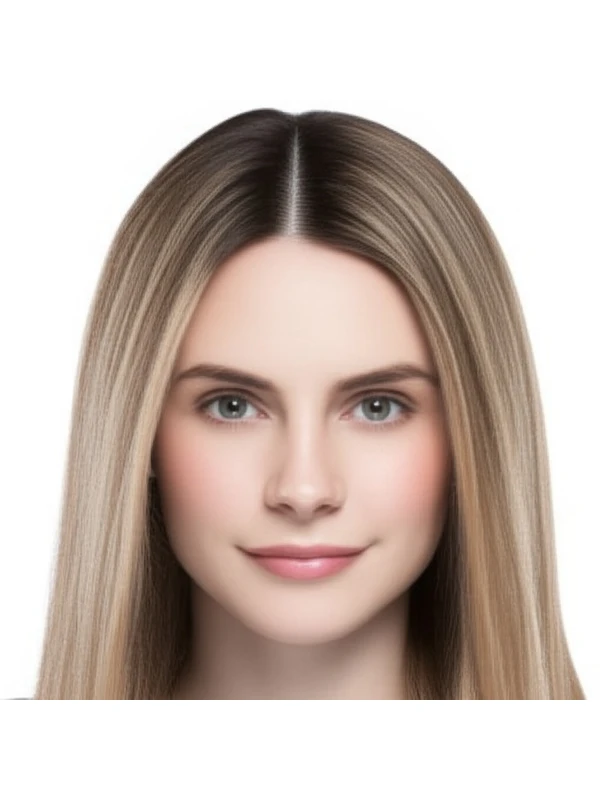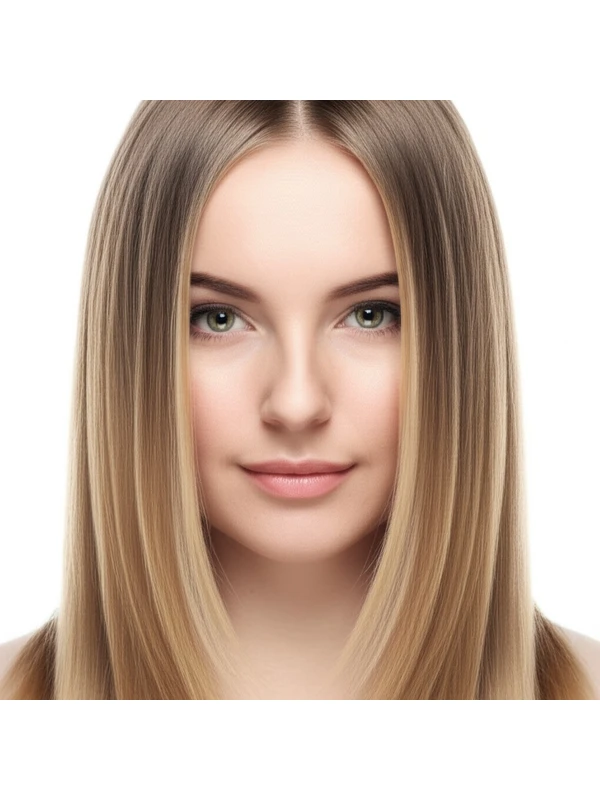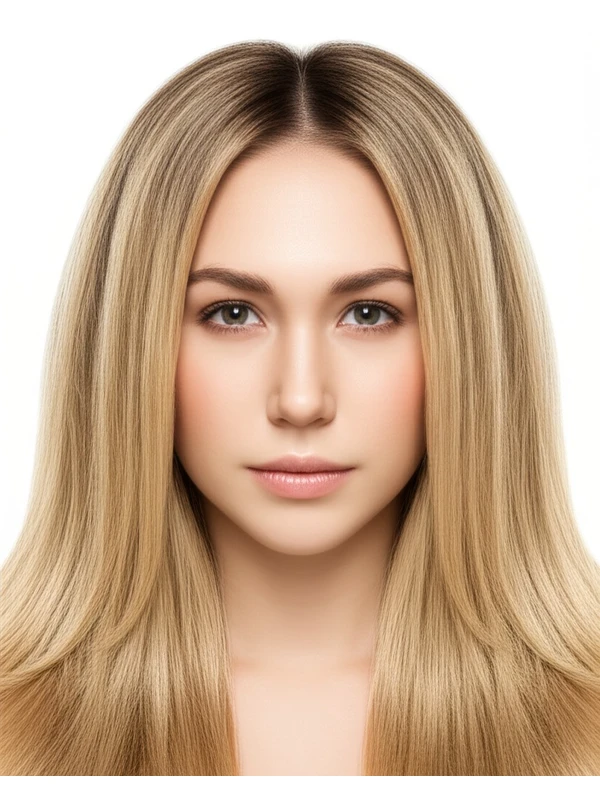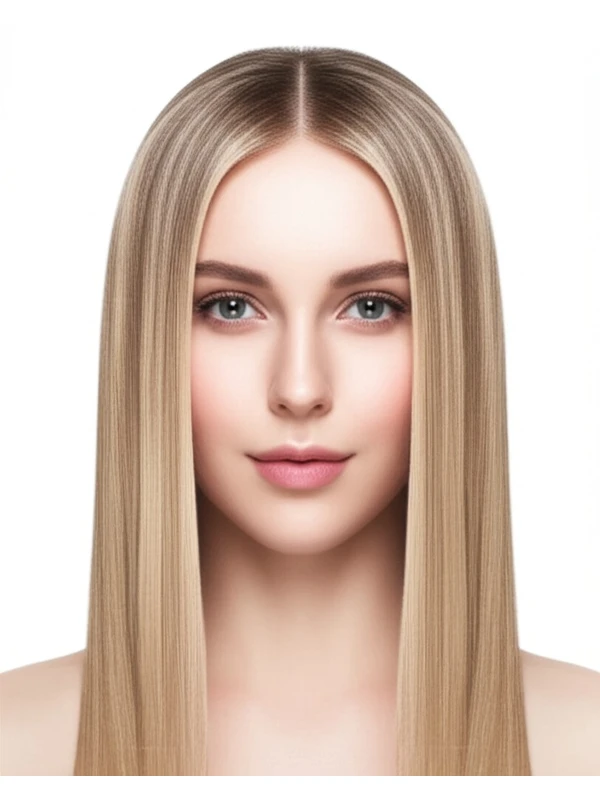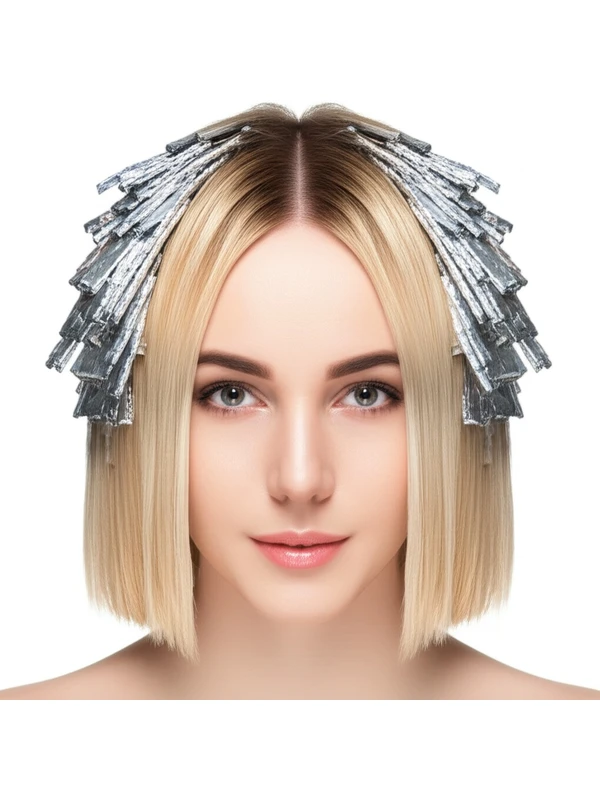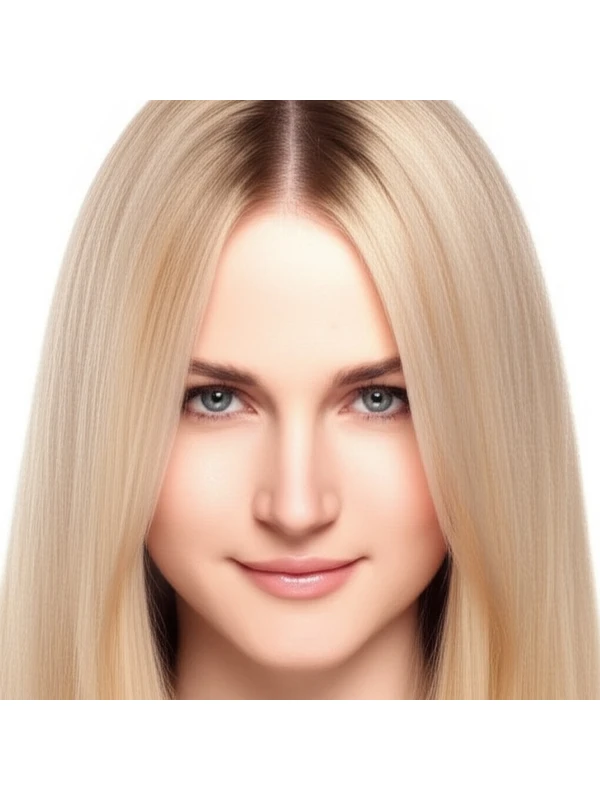#Hairline Highlights: A Brightening Guide
Hairline highlights are a popular way to add brightness and dimension around your face. They’re more than just streaks—they're a strategic placement of lighter pieces designed for subtle impact. This guide breaks down everything you need to know about this technique, from how it works to what to expect during maintenance.
#1. What Are Hairline Highlights & How Do They Work?
Hairline highlights involve lightening strands specifically around the face—along your forehead and part line. The goal is a soft, diffused brightness that frames your features.
How it’s done:
- Tools: A stylist will use a highlighting brush (often fine-tipped) or foil to apply lightener.
- Placement: Highlights are typically placed in the front hairline, around the face and along the part line. The exact placement depends on your desired look—more concentrated for more brightness, wider sections for a softer effect.
- Timing: Processing time varies based on your natural hair color, desired lightness level, and product used. Your stylist will carefully monitor to achieve the perfect shade. It's generally shorter than full-head highlighting.
#2. What Can Hairline Highlights Achieve?
Hairline highlights are versatile! Here’s what they can do:
- Dimension: Add brightness and visual interest around your face, softening features.
- Root Blur: The lightness blends with darker roots for a more gradual transition.
- Face-Framing: Emphasize facial contours by strategically placing brighter pieces.
- Coverage (Limited): While not intended to cover gray completely, they can soften the appearance of sparse or gray hairs around the face.
#3. Who Are Hairline Highlights For?
This technique is adaptable, but certain factors influence how well it will work for you.
- Natural Color Level: Works best on levels 2-6 (light brown to dark blonde). Darker hair will see a more noticeable lift and contrast.
- Undertone: Consider your skin's undertone! Warm highlights (gold, copper) complement warm skin tones. Cool highlights (ashy blonde, beige) suit cooler complexions. Your stylist can help determine the best shade for you.
- Hair Type/Texture: Suitable for all hair types – straight, wavy, curly, and coily. Curlier textures may require more strategic placement to avoid a "stringy" look. Density influences how visible the highlights will be; finer hair shows them better than thick hair.
- Length: Works best on medium-to-long lengths where the face-framing effect is most noticeable. Shorter styles can still benefit, but the impact will be more subtle.
- Lifestyle: Ideal for those who want a low-maintenance brightening option or are new to hair color.
#4. Hairline Highlights vs. Similar Techniques
Understanding the differences helps you choose the right technique:
- Balayage vs. Foilyage: Balayage is freehand painting, creating softer, blended highlights throughout the entire head. Foilyage combines balayage with foil to achieve more lift and brightness. Hairline highlights are focused only on the face-framing area.
- Highlights (Traditional): Traditional highlighting uses foils across the whole head for even saturation and brighter results. Hairline highlights only target specific sections.
- Root Smudge/Shadow Root: These techniques focus on softening the line between colored hair and natural roots after highlights are applied, creating a blended effect. Hairline highlights can be combined with these root-softening methods.
#5. Maintenance & Longevity
Hairline highlights require less commitment than full-head color but still need attention:
- Salon Timing: Expect salon visits every 6-12 weeks for touch-ups, depending on your hair growth and desired brightness.
- Toner/Gloss Refresh: Toners or glosses help maintain the desired tone (warm vs. cool) and add shine between color appointments—typically every 4-8 weeks.
- Grow-Out Behavior: The grow-out is generally soft, as the highlights are blended near the roots. This means less harsh lines as your natural hair grows in.
- Budget/Time Planning: Less expensive and quicker than full head color (typically $75 - $200).
#6. At-Home Care Tips
Proper care extends the life of your highlights:
- Wash Cadence: Wash less frequently (2-3 times per week) to prevent fading.
- Heat Protection: Always use a heat protectant spray before using styling tools like flat irons or curling wands.
- Color-Safe Care: Use color-safe shampoos and conditioners designed for highlighted hair. Purple shampoo can help neutralize brassiness (use sparingly!).
- Deep Conditioning: Incorporate deep conditioning treatments weekly to hydrate and strengthen your hair.
#7. Pros & Cons
Pros:
- Low maintenance compared to full head highlights
- Adds brightness and dimension around the face
- Softer grow-out than traditional highlighting
- Relatively quick and affordable salon visit
- Versatile – suits many hair types and colors
Cons:
- May not cover gray completely
- Less noticeable on very dark or thick hair
- Requires regular toner/gloss appointments to maintain tone
#8. Salon Consultation Script: Questions for Your Stylist
Prepare for your appointment with these questions & prompts:
- "I'm interested in hairline highlights. Can you show me examples of different placements?"
- "What level should we lift my hair to achieve the desired brightness while complementing my skin tone?"
- “Based on my hair texture and density, how will this technique look?”
- "How long do you anticipate the highlighting process taking?"
- "Can we discuss a maintenance plan (toner/gloss schedule) upfront?"
- "What at-home products would you recommend for color-treated hair?"
#9. FAQs
- Will hairline highlights damage my hair? Like any coloring service, there's potential for some dryness. Proper care and a skilled stylist minimize the risk.
- Can I do hairline highlights myself at home? While possible, it’s best left to professionals due to precise placement needed for a natural look. Uneven application can be difficult to correct.
- How long will hairline highlights last? Typically 6-12 weeks before needing a touch up. Toner/glosses extend the vibrancy of the color.
- Can I combine hairline highlights with balayage or foilyage? Absolutely! Combining techniques can create more complex and blended results.
- What if my hair is very dark? More lifting will be required, potentially leading to a slightly higher level of damage. A strand test is highly recommended.
- Are hairline highlights suitable for fine hair? Yes, they work well on fine hair because the placement creates the illusion of added volume and dimension around the face.
- Can I get hairline highlights if my hair is graying? They can soften the appearance of grays but won’t completely cover them. Discuss your expectations with your stylist.
- How does this differ from a money piece highlight? A "money piece" is a more intense, bolder highlighting technique that focuses on face-framing sections and often involves a significant contrast in color. Hairline highlights are generally softer and more subtle.
#Hairline Highlights: A Softening Touch
Hairline highlights are a subtle way to brighten your face and add dimension around your forehead. They’re essentially very fine, delicate highlights applied just at or slightly below the natural hairline. Think of them as a gentle halo effect. They're not about creating stark lines; it’s all about soft blending and luminosity.
Who are Hairline Highlights For?
Hairline highlights aren't limited to one type of person! Here’s how they can work for different features:
- Face Shape:
- Round Faces: Can help visually lift the face by drawing attention upwards. Placement slightly further away from the center hairline is key.
- Square Faces: Soften a strong jawline and add gentleness around the forehead edges. A more diffused placement works best, avoiding sharp angles near the temples.
- Heart-Shaped Faces: Can balance a wider forehead by creating visual width at the hairline.
- Oval Faces: Generally suit most placements – consider where you want to add extra brightness or dimension.
- Long Faces: Horizontal highlights can visually widen the face, but ensure they are very soft and blended to avoid elongating it further.
- Body Proportions & Height: Petite individuals might benefit from hairline highlights placed slightly higher up to create a sense of vertical length. Taller people can wear them beautifully with more relaxed placement closer to their natural hairline. Consider your overall silhouette – the goal is balance, not distortion.
- Hair Texture and Density:
- Fine Hair: Highlights add subtle visual volume without looking stringy when done correctly.
- Medium Hair: A great option for adding brightness and dimension; highlights won't be overly dramatic.
- Thick Hair: Can help break up density around the face, but ensure the highlights are fine enough to avoid a chunky look.
- Coily/Curly Hair: Requires extra care to prevent dryness and maintain curl pattern. A skilled stylist experienced with textured hair is essential. Highlights can be strategically placed to enhance curl definition or add brightness without compromising integrity.
- Thinning Hair: Can create the illusion of more volume, but gentle placement and low-impact processing are crucial.
Color Choices & Placement Considerations:
The shade you choose should complement your existing hair color. Here’s a general guide:
- Warm Tones (Golden Blondes, Honey): Best for those with warm skin tones or who want a sun-kissed look.
- Cool Tones (Beige Blondes, Ashy Highlights): Ideal for cool skin tones and to neutralize brassiness.
- Placement: Discuss your desired effect with your stylist. Do you want the highlights closer to the face? More diffused? A wider band or a very delicate dusting?
Maintenance & Grow-Out:
Hairline highlights, because they are subtle, require less maintenance than bolder color changes. However:
- Root Touch-Ups: Typically every 6–8 weeks, depending on how quickly your roots grow and the contrast you want to maintain.
- Toning: To keep the highlights bright and prevent brassiness, a toning gloss may be needed every 4–6 weeks. Especially important for lighter shades or those with porous hair.
- Deep Conditioning: Essential to combat dryness, especially for curly/coily textures. Apply weekly.
- Grow-Out Strategy: As the highlights grow out, they will naturally blend into your base color. Your stylist can help you adjust the placement of future touch-ups to soften the line further or transition seamlessly. Consider a glaze as roots appear to maintain tone and reduce contrast during this phase.
#Frequently Asked Questions (FAQs)
Q: Are hairline highlights damaging? A: Like any hair coloring process, hairline highlights involve some level of processing. However, because they are typically applied in very small sections with lower developer volumes, the damage is generally less than a full head of color. Communicate your concerns about damage to your stylist so that they can use gentler techniques and products.
Q: How long do hairline highlights last? A: The longevity depends on factors like hair porosity, sun exposure, and product usage. Generally, you can expect the initial brightness to fade slightly over 4-6 weeks, with root regrowth becoming noticeable around 6-8 weeks.
Q: Can I do hairline highlights at home? A: While possible for experienced DIYers who are comfortable with color techniques, it's highly recommended to have them professionally done. Precision placement and blending are crucial for a natural look. Home kits often lack the control needed for such delicate work.
Q: What’s the difference between hairline highlights and baby lights? A: Both involve fine, subtle highlights around the face. Hairline highlights specifically focus on the area near the forehead, while "baby lights" are a more generalized term for very fine, soft highlights throughout the hair – often including the hairline but extending further down.
Q: I have dark hair; will hairline highlights even show? A: Absolutely! Even with darker hair colors, strategically placed and toned highlights can create a beautiful brightening effect. Your stylist might need to lift the level slightly more than on lighter bases, so prioritize hair health above all else.
Q: Can hairline highlights work with gray hair? A: Yes! Hairline highlights are a fantastic way to soften the appearance of gray roots and add dimension around the face for those embracing silver or grey hair. A stylist experienced in working with gray hair can blend the highlights seamlessly.
